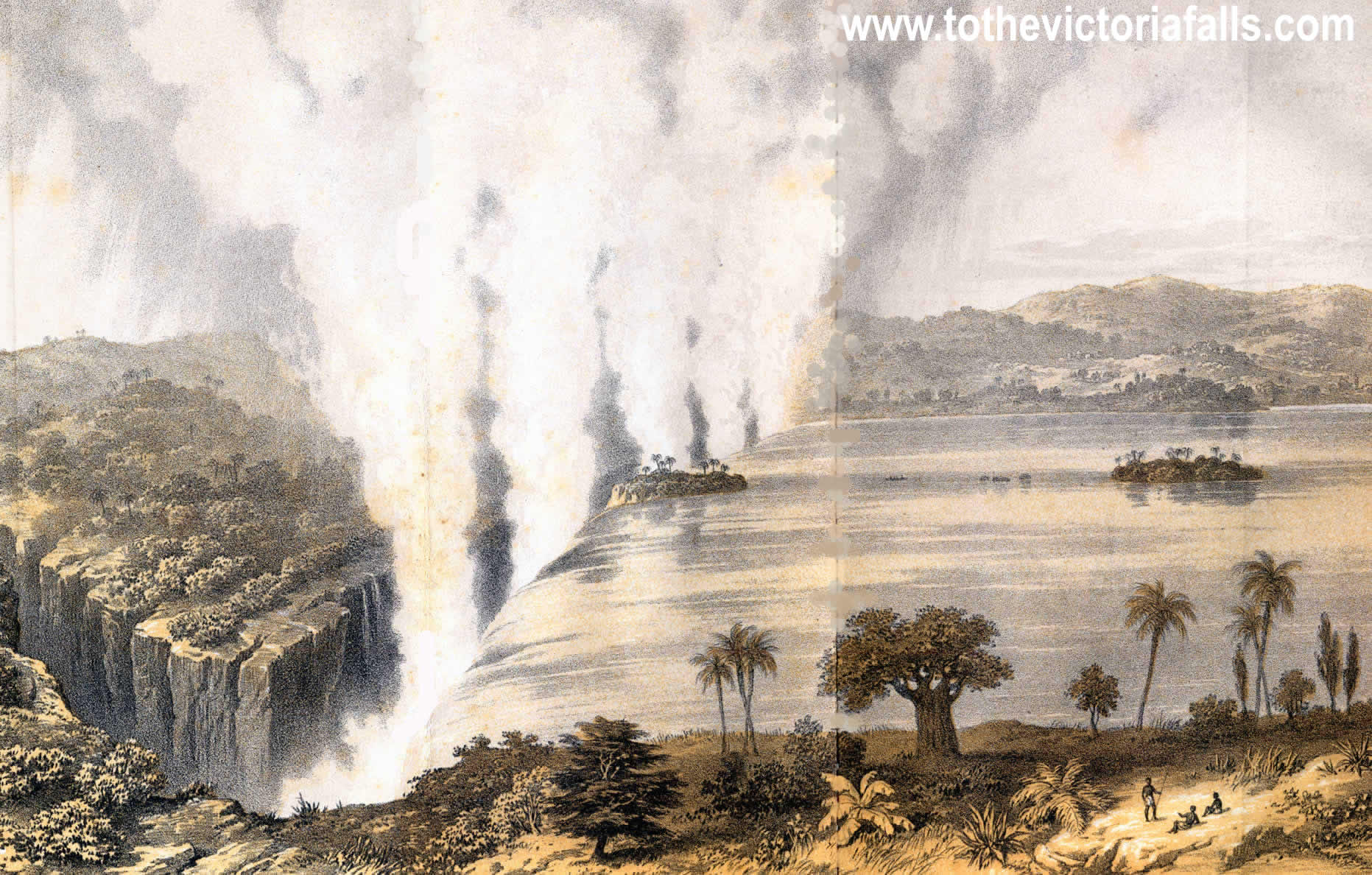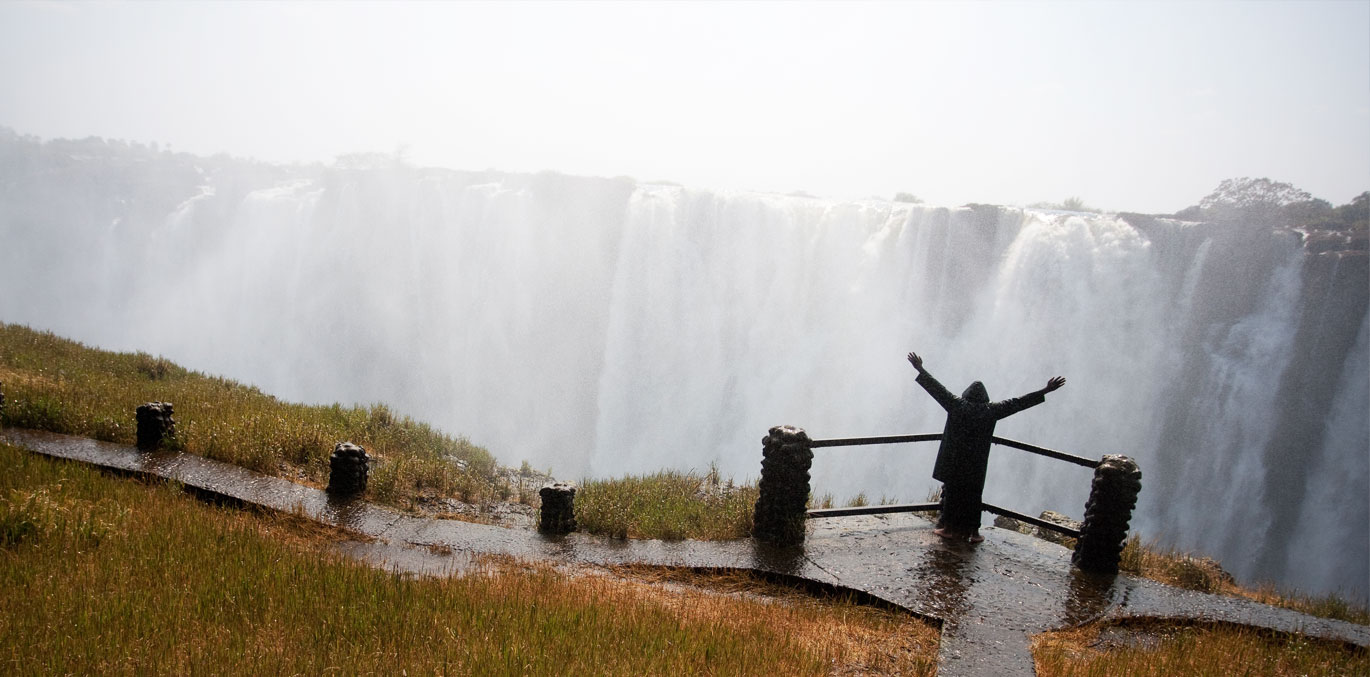David Livingstone spreads the word
Whatever your position on whether or not David Livingstone can be said to have 'discovered' the Victoria Falls, he was the first to attempt to describe the Falls in the written, and printed, word. Before artists or photographers see the sights with their own eyes and could convey the scene of the Falls visually, Livingstone brought the Falls to the attention of the world through his words.
Livingstone had heard tales of a great waterfall on his first visit to the region in 1853, when he first indentfied the great river he encountered as the Zambezi, linking it to the well-known river delta on the east coast.
But he did not travel downstream until late in 1855, on his second visit, when he set out on a courageous attempt to follow his river to the coast and prove his claims.
Accompanied by Chief Sekeletu and a large party of Makalolo porters, they followed the river downstream.
A diary entry, in one of the rough notebooks in which Livingstone used to make day-to-day notes, records matter-of-factly;
"Musioatunya bears SSE from Sekota islet after 20 minutes sail thence on 16th November, 1855, saw three or five large columns of vapour rising 100 or more feet."
Livingstone later expanded his journal notes, published in 'Missionary Travels and Researches in South Africa' in 1857 (and one of the best-selling books of the 19th Century), writing:
"After twenty minutes' sail from Kalai we came in sight, for the first time, of the columns of vapour appropriately called 'smoke,' rising at a distance of five or six miles, exactly as when large tracts of grass are burned in Africa. Five columns now arose, and, bending in the direction of the wind, they seemed placed against a low ridge covered with trees; the tops of the columns at this distance appeared to mingle with the clouds. They were white below, and higher up became dark, so as to simulate smoke very closely." (Livingstone, 1857)

The Victoria Falls of the Zambesi River (from Livingstone's Missionary Travels, 1857). This etching was commissioned by the publisher from an artist in London, who having never seen the Falls relied on Livingstone's field sketches and written descriptions to detail the scene. Livingstone noted in the text that "The artist has a good idea of the scene, but, by way of explanation, he has shown more of the depth of the fissure than is visible, except by going close to the edge"
He was struck by the beauty of the river and its banks, recording emotively in his diary:
"The whole scene was extremely beautiful; the banks and islands dotted over the river are adorned with sylvan vegetation of great variety of colour and form. At the period of our visit several trees were spangled over with blossoms. There, towering over all, stands the great burly baobab, each of whose arms would form the trunk of a large tree, besides groups of graceful palms, which with their feathery-shaped leaves depicted on the sky, lean their beauty to the scene. Some trees resemble the great spreading oak, others assume the character of our own elms and chestnuts; but no one can imagine the beauty of the view from anything witnessed in England. It had never been seen before by European eyes; but scenes so lovely must have been gazed upon by angels in their flight." (Livingstone, 1857)
This last passage has often been misquoted in reference to the Falls themselves, but it was the stretches of the river upstream of the falls which had enchanted Livingstone.
About one kilometre upstream of the falls Livingstone transferred to a smaller, lighter canoe and proceeded in this to the island between Main and Rainbow Falls which is today known as Livingstone Island.
The following passage describes his journey to the edge of the Falls:
"When about half a mile from the falls, I left the canoe by which we had come down thus far, and embarked in a lighter one, with men well acquainted with the rapids, who, by passing down the centre of the stream in the eddies and still places caused by many jutting rocks, brought me to an island situated in the middle of the river, and on the edge of the lip over which the water rolls. In coming hither there was danger of being swept down by the streams which rushed along on each side of the island; but the river was now low, and we sailed where it is totally impossible to go when the water is high. But, though we had reached the island, and were within a few yards of the spot, a view from which would solve the whole problem, I believe that no one could perceive where the vast body of water went; it seemed to lose itself in the earth, the opposite lip of the fissure into which it disappeared being only 80 feet distant. At least I did not comprehend it until, creeping with awe to the verge, I peered down into a large rent which had been made from bank to bank of the broad Zambezi, and saw that a stream of a thousand yards broad leaped down a hundred feet, and then became suddenly compressed into a space of fifteen or twenty yards... the most wonderful sight I had witnessed in Africa." (Livingstone, 1857)
Source: To The Victoria Falls, Peter Roberts



